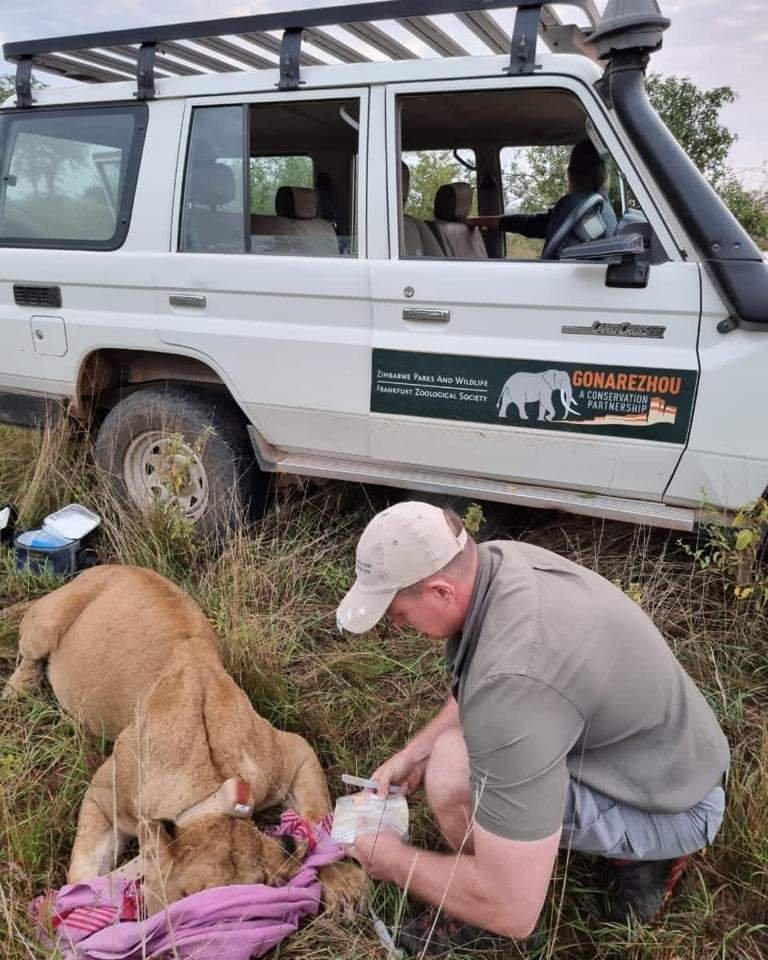Beatific Gumbwanda
CHIREDZI-Gonarezhou National Park has moved towards addressing human-wildlife conflict through introduction of the lion collar system.
The move will enable them to intensively and continuously monitor the location of the collared animals.
Gonarezhou Natonal Park recently introduced the pilot lion satellite collar system on two lions (female and male), which will enable its lion research team to identify and understand lion populations and dynamics as well as their location which will then allow a quicker response towards mitigating any potential wildlife human conflict.
In an interview, Gonarezhou National Parks Marketing and Communications Clerk Malvern Mrewa said the collar system will allow the park authority and lion research team to continuously check the location of these animals as well as collect data of how they utilize the park’s space.
“Wildlife collar are used to collect animal location data. This then allows us to continuously and intensively monitor the collared animals, helping us to learn about their space use, activity patterns and threats they face, in order for us to devise solutions and recommendations to help protect them and those around them,” said Mrewa.
Lions are a critical part of the African ecosystem as it keeps the number of herbivores under control. If the herbivore population is not regulated, the increase of competition among them could cause some to go extinct, thereby reducing biodiversity.
With the ever increasing human populations, lions are in trouble with the increasing human population threatening lion habitats which is continuously pushing the predators into close contact with humans, increasing the risk of human-wildlife conflict with the killing of lions as well as livestock.
Collaring is an effective way to track lion movement and mitigate human-wildlife conflict where lions exist closer to human settlements. They send real time location updates to park authorities who can later warn communities about the presence of lions in the vicinity and deploy wildlife officers to respond immediately.
The satellite collaring project is still at its infant stages and will continue for a while as it will enable the lion research team to identify and understand lion populations and dynamics in the park.
Every year, there are reports of lions that could have escaped the boundaries of conservancies, either Gonarezhou or Malilangwe, while some end up being shot by professional hunters and others escorted back into their territories.
With the introduction of the lion collar system, it will be easy for Gonarezhou to closely monitor the movement of these predators and act accordingly in order to prevent the human-wildlife conflict threat.







